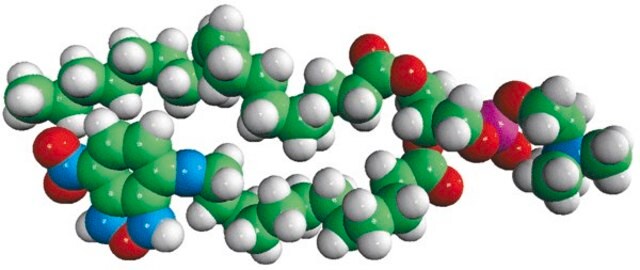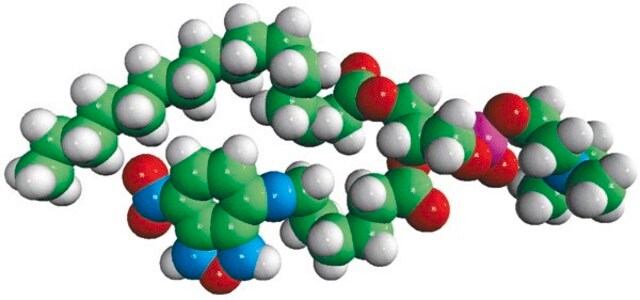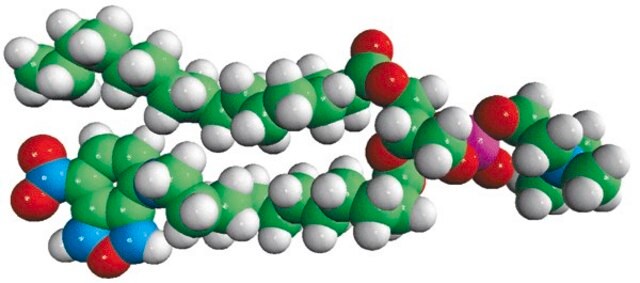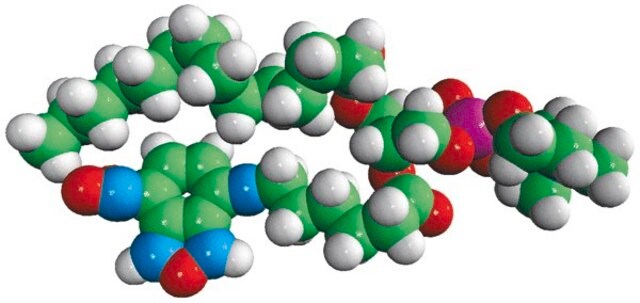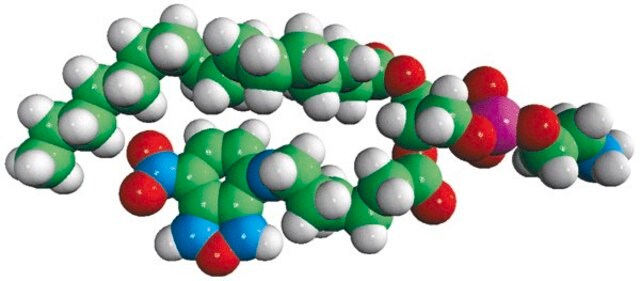810133C
Avanti
18:1-12:0 NBD PC
Avanti Research™ - A Croda Brand 810133C
Sinónimos:
1-Oleoyl-2-[12-[(7-nitro-2-1,3-benzoxadiazol-4-yl)amino]dodecanoyl]-sn-Glycero-3-Phosphocholine
About This Item
Productos recomendados
assay
>99% (TLC)
form
liquid
packaging
pkg of 1 × 1 mL (810133C-1mg)
pkg of 5 × 1 mL (810133C-5mg)
manufacturer/tradename
Avanti Research™ - A Croda Brand 810133C
concentration
1 mg/mL (810133C-1mg)
1 mg/mL (810133C-5mg)
lipid type
fluorescent lipids
phospholipids
shipped in
dry ice
storage temp.
−20°C
General description
Application
- the generation giant unilamellar vesicles (GUVs) subjected to fluorescence microscopy
- labelling lipid bilayers formed by vesicle fusion in order to study the lipid distribution by fluorescence microscopy
- the preparation of phospholipid-coated beads
Biochem/physiol Actions
Packaging
Legal Information
signalword
Danger
Hazard Classifications
Acute Tox. 3 Inhalation - Acute Tox. 4 Oral - Aquatic Chronic 3 - Carc. 2 - Eye Irrit. 2 - Repr. 2 - Skin Irrit. 2 - STOT RE 1 - STOT SE 3
target_organs
Central nervous system, Liver,Kidney
wgk_germany
WGK 3
Elija entre una de las versiones más recientes:
Certificados de análisis (COA)
It looks like we've run into a problem, but you can still download Certificates of Analysis from our Documentos section.
Si necesita más asistencia, póngase en contacto con Atención al cliente
¿Ya tiene este producto?
Encuentre la documentación para los productos que ha comprado recientemente en la Biblioteca de documentos.
Nuestro equipo de científicos tiene experiencia en todas las áreas de investigación: Ciencias de la vida, Ciencia de los materiales, Síntesis química, Cromatografía, Analítica y muchas otras.
Póngase en contacto con el Servicio técnico
